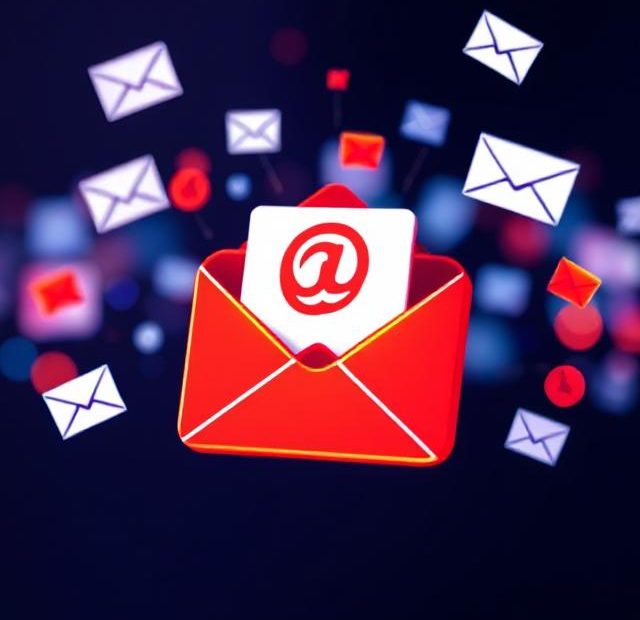Email marketing is one of the most powerful tools in your digital marketing arsenal. But sending emails alone won’t drive results — your content needs to be strategic, relevant, and persuasive. Whether your goal is to drive sales, generate leads, or build relationships, knowing how to write email content that converts is key to maximizing ROI.
In this article, we’ll walk through essential strategies and best practices for creating compelling email copy that turns subscribers into loyal customers.
Why Email Content Matters
Your subscribers already showed interest by signing up — now it’s your job to keep that attention and lead them toward action. Strong email content:
-
Captures attention quickly
-
Builds trust and connection
-
Encourages specific actions
-
Strengthens brand loyalty
With inboxes flooded daily, your message must stand out. If you want to write email content that converts, you need more than just words — you need strategy and intent.
1. Start with a Compelling Subject Line
Your subject line is the first thing people see — and it determines whether they open your email or ignore it. A high-converting email starts with a subject line that sparks curiosity or provides clear value.
Tips for great subject lines:
-
Keep it under 50 characters
-
Use action-oriented language
-
Create urgency or curiosity
-
Avoid spammy words like “FREE!!!” or “Act Now!”
Examples:
-
“Your 20% Discount Expires Tonight”
-
“3 Surprising Ways to Save on Insurance”
-
“Still Thinking It Over?”
A good subject line gets them to open. But now you have to deliver on that promise.
2. Hook Them in the First Line
After the subject line, your opening sentence needs to keep them reading. This “hook” should speak directly to the reader’s problem, desire, or curiosity.
Effective hooks:
-
Ask a question (“Are you tired of low open rates?”)
-
State a bold fact or stat
-
Make it personal (“You’re not alone if you feel stuck…”)
-
Tease a benefit (“Here’s how top freelancers land high-paying clients…”)
Your goal is to create momentum from the very start.
3. Keep It Clear and Conversational
Nobody likes reading emails that sound like legal disclaimers or corporate memos. To write email content that converts, use natural language that’s easy to understand and feels personal.
Guidelines:
-
Write in short sentences and paragraphs
-
Use “you” more than “we”
-
Avoid jargon and fluff
-
Aim for a friendly, helpful tone
Think of your email as a conversation, not a sales pitch.
4. Focus on One Goal Per Email
Don’t overwhelm readers with multiple messages. Each email should focus on one primary goal: downloading an eBook, buying a product, signing up for a webinar, etc.
Structure your email with:
-
One clear topic
-
A single, strong call-to-action (CTA)
-
Supporting content (like benefits or testimonials)
Clarity leads to action. The more focused your message, the more likely readers are to convert.
5. Highlight Benefits, Not Just Features
Your product or offer may have amazing features, but your readers care about what’s in it for them. Shift from product-focused language to customer-focused benefits.
Instead of:
“Our CRM includes real-time reporting.”
Say:
“Track your sales performance instantly and make smarter decisions.”
Benefits answer the customer’s unspoken question: How does this help me?
6. Use Social Proof and Credibility Boosters
People trust other people. When you include testimonials, reviews, case studies, or impressive stats, you increase the chances of conversion.
Examples of social proof:
-
“Trusted by 10,000+ small businesses”
-
“See why Lisa grew her revenue by 30%”
-
“Rated 4.8 stars on Trustpilot”
Back up your claims with real-world results to earn reader trust.
7. Add a Strong Call-to-Action (CTA)
Every email should guide the reader toward a specific action. Your CTA should be easy to find, clearly worded, and action-oriented.
CTA best practices:
-
Use buttons or bold links
-
Use verbs: “Download Now,” “Get Started,” “See Plans”
-
Place the CTA above the fold — and again at the end
-
Test different CTA text to see what performs best
Don’t assume the reader knows what to do next — spell it out clearly.
8. Optimize for Mobile Readers
Over 60% of emails are opened on mobile devices. If your email doesn’t look good on a phone, you could lose a huge chunk of your audience.
Mobile optimization tips:
-
Use a single-column layout
-
Keep subject lines short
-
Use large fonts and CTA buttons
-
Compress images for faster load times
Always test your emails on mobile before sending.
9. Test and Improve Over Time
Even great email content can perform better with tweaks. Use A/B testing and analytics to optimize your results.
Test elements like:
-
Subject lines
-
CTA wording and placement
-
Email length
-
Send times and days
Look at open rates, click-throughs, and conversions to guide your improvements.
Final Thoughts
To truly succeed at email marketing, you must learn how to write email content that converts. This means understanding your audience, focusing your message, and crafting every word with purpose. It’s not about writing more — it’s about writing smarter.
From your subject line to your CTA, every piece of the email should lead the reader toward a clear, valuable action. And with consistent testing, personalization, and a commitment to clarity, you’ll build campaigns that not only convert — but also connect.
So next time you sit down to write an email, remember: speak to the reader, solve their problem, and make it easy to say yes. That’s how you turn clicks into customers.
Also, you can learn more about Loyal Customer List here.
